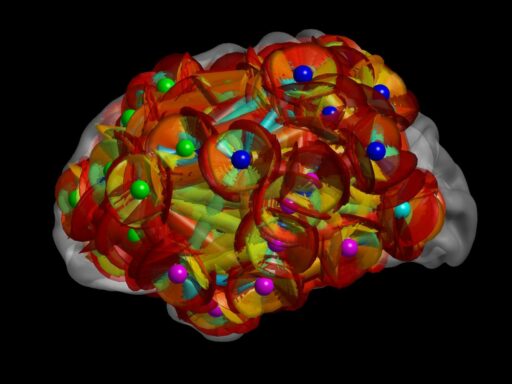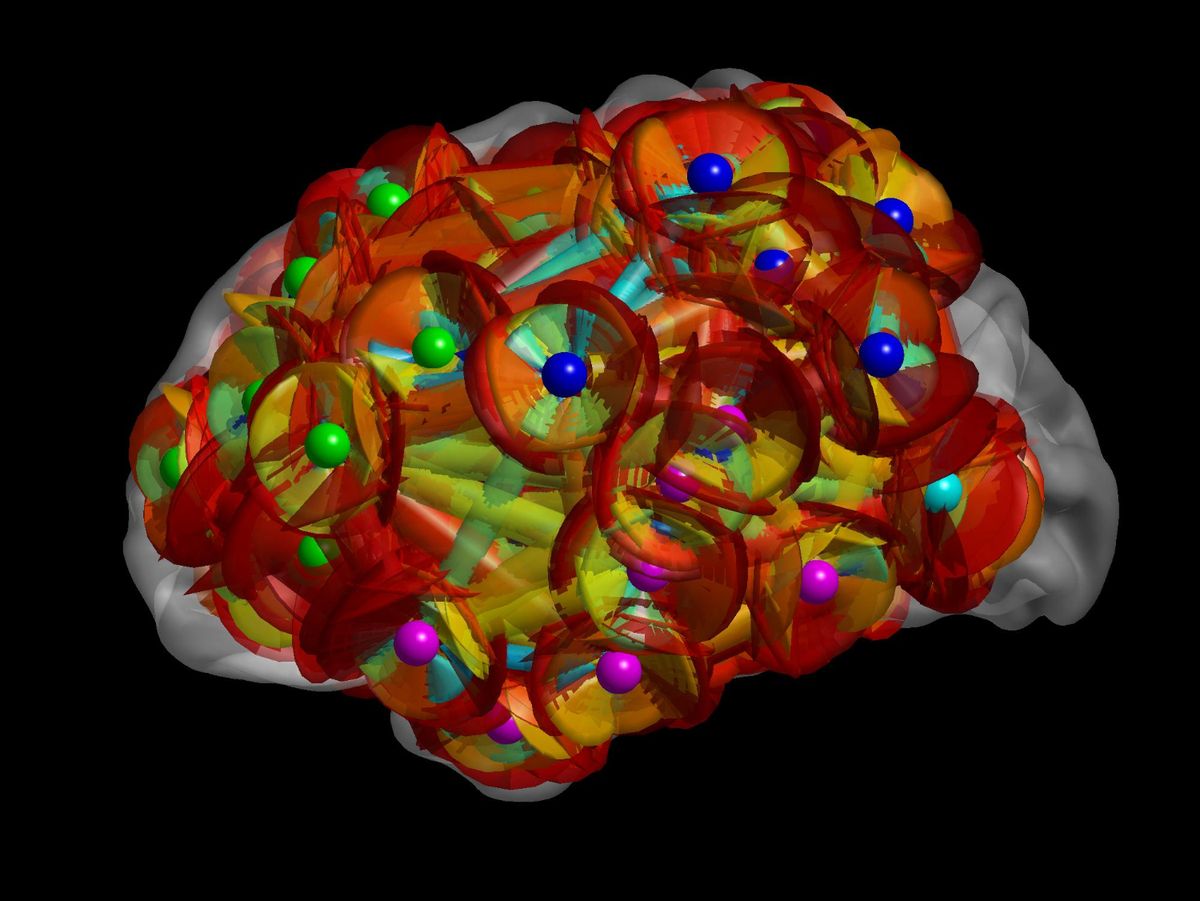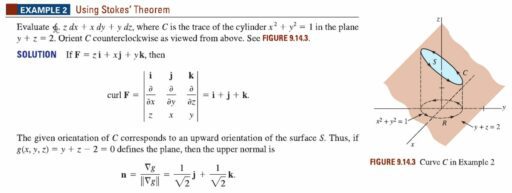Table of Contents
Stack data structures are a powerful tool in programming, offering a simple yet effective way to manage data in a Last-In, First-Out (LIFO) manner. This in-depth guide delves into the intricacies of stacks, exploring their fundamental principles, real-world applications, advanced concepts, performance optimization strategies, and a comparative analysis with other data structures. Understanding and utilizing stacks can significantly enhance a programmer’s ability to solve problems and optimize code in the dynamic field of software development.
Key Takeaways
- Stacks operate on the LIFO principle, making them ideal for scenarios like browser history management and function call stacks.
- The choice between array and linked list implementations of stacks affects memory usage and performance, underscoring the importance of understanding underlying data structures.
- Advanced stack concepts such as handling stack overflow, recursion, and concurrency are crucial for robust and efficient software systems.
- Performance optimization of stacks involves analyzing time complexity and space usage to tailor stack implementations to specific use cases.
- Stacks are one of several fundamental data structures, and comparing them with others like queues, trees, and heaps provides a deeper insight into choosing the right tool for the job.
Fundamentals of Stack Data Structures


Understanding the LIFO Principle
At the heart of stack data structures lies the Last-In-First-Out (LIFO) principle. This fundamental concept dictates that the most recently added element is the first to be removed. Imagine a stack of plates; as you add more plates to the top, the last plate you put on is the first one you’ll take off when you need a plate.
The LIFO principle is what differentiates a stack from other linear data structures. For instance, a queue operates on a First-In-First-Out (FIFO) basis, where the first element added is the first to be removed. This contrast is crucial in understanding when and how to use stacks effectively.
The efficiency of a stack is evident in its operations. Accessing the top element, adding a new element, or removing the top element can all be done in constant time, O(1). This makes stacks an ideal choice for scenarios where quick, last-minute access is paramount.
Here’s a comparison of stack and queue operations:
| Operation | Stack (LIFO) | Queue (FIFO) |
|---|---|---|
| Access | O(1) | O(1) |
| Add | O(1) | O(1) |
| Remove | O(1) | O(1) |
Stack Operations: Push, Pop, Peek, and More
Stacks are dynamic data structures that follow the Last-In-First-Out (LIFO) principle, where elements are added and removed from the top. The efficiency of stack operations is crucial for performance in various applications.
- push(): This operation adds a new element to the top of the stack. It is a fundamental action that allows stacks to grow as needed.
- pop(): This operation removes the topmost element from the stack, effectively reducing its size by one.
- peek(): This operation retrieves the top element of the stack without removing it, providing a way to inspect the current top value.
The time efficiency of these operations is typically constant, O(1), meaning they are performed in a fixed amount of time regardless of the stack’s size.
In addition to these basic operations, stacks may also support methods to check if the stack is empty, search for elements, or even iterate through the items without altering the stack’s state.
Implementation Details: Array vs. Linked List
When implementing a stack, the choice between using an array or a linked list is pivotal. Arrays provide constant time access to elements, but they have a fixed size which can lead to stack overflow if not managed properly. On the other hand, linked lists offer dynamic resizing and efficient insertion and deletion operations.
-
Array-based Stacks:
- Fixed size; requires size estimation upfront.
- Constant time access (O(1)) to elements by index.
- Potentially wasteful if allocated memory is not fully utilized.
-
Linked List-based Stacks:
- Dynamic resizing without the need for upfront size estimation.
- Efficient operations for pushing and popping elements.
- No wasted memory as nodes are created and destroyed as needed.
Choosing the right implementation depends on the specific requirements of the application, such as memory constraints and operation complexity. While arrays are simple and fast for static-sized stacks, linked lists provide flexibility for stacks with unpredictable growth.
Real-World Applications of Stacks


Browser History Management
Stack data structures are pivotal in managing browser history, where the Last-In-First-Out (LIFO) principle ensures a user can navigate back through previously visited web pages in reverse order. When a user visits a new page, the browser ‘pushes’ the page onto the stack. Clicking the back button ‘pops’ the last visited page off the stack, effectively taking the user to the previous page.
The simplicity of stack operations lends itself to efficient browser history management, allowing for quick access and minimal overhead.
The following list outlines the typical stack operations used in browser history management:
- Push: Add a new page to the history stack when a user visits it.
- Pop: Remove the most recently visited page from the stack when the user navigates back.
- Peek: Look at the most recent page without navigating away, useful for previewing the previous page.
- IsEmpty: Check if there are any pages left in the history stack, which is helpful when determining if the back button should be disabled.
Syntax Parsing in Compilers
Compilers use stacks to manage the complex task of syntax parsing, which is crucial for understanding the structure of programming code. Stacks are particularly effective in parsing algorithms due to their ability to track the nesting of symbols such as parentheses, brackets, and braces. This ensures that the code’s syntax is valid and can be correctly executed by a computer.
In the context of syntax parsing, the stack’s LIFO (Last In, First Out) nature allows for the efficient handling of nested structures. When a compiler encounters an opening symbol, it pushes it onto the stack. Upon finding a closing symbol, the compiler pops from the stack, expecting a matching opening symbol. If the stack is empty or the symbols do not match, this indicates a syntax error.
The simplicity and efficiency of stack operations make them indispensable in the parsing process, providing a clear mechanism for validating nested structures within the code.
The following list outlines the typical steps a compiler takes when using a stack for syntax parsing:
- Push opening symbols onto the stack.
- On encountering a closing symbol, pop from the stack and check for a match.
- If the stack is empty or the symbols do not match, report a syntax error.
- Continue parsing until all symbols have been processed.
Function Call Management in Programming Languages
In the realm of programming, stacks are indispensable for managing function calls. Each time a function is called, a new frame is pushed onto the stack, containing information such as local variables, arguments, and the return address. Once the function completes its execution, its frame is popped off the stack, and control is returned to the calling function.
The call stack is particularly crucial in languages like JavaScript, where it orchestrates the sequence of function executions. This ensures that the most recently invoked function is the first to complete, adhering to the Last-In-First-Out (LIFO) principle. Here’s a simplified view of a call stack in action:
- A function
Ais called. - Inside
A, functionBis invoked. - Function
Bcalls functionC. Ccompletes execution and is removed from the stack.- Control returns to
B, and then toAas they sequentially complete.
The call stack’s orderly process allows for nested function calls and recursive algorithms to execute without confusion, maintaining a clear chain of execution at any given moment.
Understanding the call stack’s behavior is essential for debugging and optimizing code, as it can reveal the sequence of function calls leading to an error, or identify performance bottlenecks due to deep or excessive recursion.
Undo Mechanisms in Software
The ability to undo actions in software applications is a critical feature that enhances user experience by allowing for the correction of mistakes. Stacks play a pivotal role in implementing undo mechanisms, storing the history of user actions in a manner that can be reversed. Each action is pushed onto the stack, and when the user triggers an undo, the most recent action is popped off, restoring the previous state.
In the context of software development, undo stacks are often integrated into various tools and editors. For example, text editors use stacks to manage changes made to documents, while graphic design programs track each adjustment to an image or design element. The table below outlines common software types and their corresponding undo stack usage:
| Software Type | Undo Stack Usage |
|---|---|
| Text Editors | Document edits |
| Graphic Design Programs | Image adjustments |
| IDEs (Integrated Development Environments) | Code changes |
| 3D Modeling Software | Model transformations |
The design of an effective undo mechanism requires careful consideration of the user’s workflow and the types of actions that should be reversible. It is not just about recording actions but also about maintaining the integrity of the user’s work.
Optimizing the performance of undo stacks involves limiting the memory footprint by only storing the necessary information and ensuring that the stack operations are executed swiftly to provide a seamless user experience. As software continues to evolve, the sophistication of undo mechanisms grows, leveraging stacks to provide more granular control over the history of user actions.
Advanced Concepts in Stack Data Structures
Memory Management and Stack Overflow
Stacks are a crucial component in memory management for most programming languages, providing a structured way to allocate and deallocate memory for function calls and local variables. However, the very nature of a stack’s dynamic resizing can lead to a critical issue known as a stack overflow. This occurs when the stack exceeds its allocated memory, often due to deep or infinite recursion, or an excessive number of function calls.
Stack overflow is not just a programming error; it’s a signal that memory allocation needs careful consideration to prevent potential system crashes.
Understanding the limits of a stack and implementing safeguards is essential for robust applications. Here are some common strategies to prevent stack overflow:
- Limiting recursion depth
- Optimizing function calls to use less stack space
- Employing tail recursion, when possible
- Utilizing compiler flags to increase stack size
By adhering to these practices, developers can mitigate the risks associated with stack overflows and ensure their applications run smoothly.
Recursive Stacks and Stack Frames
In the context of recursion, stacks play a pivotal role in managing the execution of recursive functions. When a recursive function is invoked, it adds a new frame to the stack, containing the function’s local variables and the return address. As the function calls itself, this process repeats, creating a new frame for each call.
The stack’s LIFO nature ensures that the most recent function call is addressed first, and as each call completes, the stack unwinds, returning control to the previous frame. This orderly execution is crucial for the correct functioning of recursive algorithms. However, recursion depth is limited by the stack size, and excessive recursion can lead to a stack overflow.
The efficient management of stack frames is essential to prevent stack overflow and ensure the integrity of recursive processes.
Understanding the relationship between recursion and stack frames is fundamental for developers, as it impacts memory allocation and the execution flow of programs. The table below summarizes the key aspects of stack usage in recursion:
Thread-Safe Stacks in Concurrent Programming
Ensuring thread safety in stack implementations is crucial when dealing with concurrent programming environments. Thread-safe stacks prevent data corruption and ensure that operations on the stack are atomic, meaning they are completed without interruption. This is particularly important for stacks because their LIFO nature often means they are used to store critical control information, such as return addresses and local variables in function calls.
To achieve thread safety, various synchronization mechanisms can be employed. These include using locks, atomic operations, or concurrent data structures provided by the programming language’s standard library. For instance, Java provides the Stack class, which is synchronized, but it is generally recommended to use the ConcurrentLinkedDeque for better performance in concurrent scenarios.
Thread safety in stacks is not just about preventing concurrent access; it’s also about ensuring the integrity of the data structure during modifications.
Here is a comparison of different synchronization techniques:
- Lock-based synchronization: Ensures exclusive access to the stack by locking it during an operation.
- Atomic operations: Utilize low-level atomic instructions to perform operations without locks.
- Concurrent collections: Use data structures designed for concurrent access, which handle synchronization internally.
Optimizing Stack Performance


Time Complexity Analysis of Stack Operations
When optimizing stack performance, a critical aspect to consider is the time complexity of stack operations. The efficiency of these operations is paramount for ensuring fast execution times in software applications.
- Push operation, which adds an element to the top of the stack, has a time complexity of O(1).
- Pop operation, which removes the top element, also boasts an O(1) time complexity.
- Peek operation, to view the top element without removing it, maintains constant time complexity O(1).
The constant time complexity of stack operations is a significant advantage, making stacks an ideal choice for scenarios requiring quick data access and modification.
Understanding these complexities is essential for the design and analysis of algorithms that incorporate stacks. It is also crucial for developers to consider these factors when dealing with advanced data structures and algorithms, ensuring the effective use of keywords for SEO success in topics such as AI, Big Data, Data Analysis, Python, R, and more.
Space Optimization Techniques
When dealing with stack data structures, space optimization is a critical factor for enhancing performance, especially in memory-constrained environments. By minimizing the memory footprint of a stack, applications can run more efficiently and reduce the risk of stack overflow errors.
One common technique is to use a dynamic array that resizes itself based on the stack’s current needs. This approach ensures that memory is not wasted on unused capacity. However, it’s important to balance the resizing operations to avoid frequent, costly memory allocations.
Another strategy involves the use of memory pools, where a large block of memory is pre-allocated and individual stack elements are drawn from this pool. This can significantly reduce the overhead associated with frequent allocations and deallocations.
- Implement a dynamic array with resizing logic
- Utilize memory pools for pre-allocation
- Optimize data representation to reduce per-element memory usage
By carefully considering the memory usage patterns of your stack and applying appropriate space optimization techniques, you can achieve a more efficient and robust data structure.
Custom Stack Implementations for Specific Use Cases
In the realm of software development, custom stack implementations are often tailored to meet the unique requirements of specific applications. For instance, mobile app startups may opt for technology stacks that enable rapid prototyping and development.
When considering a technology stack for mobile applications, factors such as performance, UI/UX design consistency, and development time are crucial. A popular choice is Flutter for its cross-platform capabilities, extensive platform support, and customizable widgets.
The selection of an appropriate stack is pivotal in ensuring that the application is scalable, maintainable, and performs efficiently across different devices and operating systems.
Moreover, web development projects like ToDo webapps or Blog CMS may require stacks that integrate seamlessly with web technologies like Django, Reactjs, or Node Js. Here’s a list of common web technologies and their associated development focus:
- Django: Building robust web applications with Python
- Reactjs: Creating interactive UIs for web and mobile apps
- Node Js: Developing scalable server-side applications
Ultimately, the choice of stack should align with the project’s goals, the team’s expertise, and the desired end-user experience.
Comparative Analysis of Stack with Other Data Structures


Stack vs. Queue: Choosing the Right Data Structure
When deciding between a stack and a queue, it’s essential to consider the specific needs of the application. A stack, following the Last-In-First-Out (LIFO) principle, is ideal for scenarios where the most recent addition is the first to be removed. In contrast, a queue operates on the First-In-First-Out (FIFO) principle, making it suitable for processes that require servicing in the order they arrive.
Both stacks and queues can dynamically resize and provide constant time access to their respective ends, but their use cases differ significantly.
Understanding the nuances of each structure can guide developers in making an informed choice. Below is a comparison of key characteristics:
- Stack: LIFO, access the top element in O(1), used for backtracking, expression evaluation.
- Queue: FIFO, access the front and rear elements in O(1), used for scheduling, buffering.
Ultimately, the decision hinges on whether the task at hand requires the most recent or the oldest data to be processed first.
Integrating Stacks with Trees and Graphs
Stacks, with their Last-In-First-Out (LIFO) behavior, are not standalone entities in the realm of data structures. They often play a crucial role when combined with other complex structures like trees and graphs. For instance, in tree traversals, stacks can be used to efficiently manage the nodes yet to be visited, especially in depth-first search (DFS) algorithms.
In graph algorithms, stacks are instrumental in keeping track of vertices during depth-first traversals. This ensures that backtracking to previous vertices is handled smoothly, which is essential for exploring all possible paths within a graph. The use of stacks in such scenarios highlights their versatility and importance in algorithm design.
The integration of stacks with trees and graphs exemplifies the adaptability of data structures and their potential to solve complex computational problems.
Understanding the interplay between stacks and other data structures is key to unlocking advanced capabilities in software development. It allows for the creation of efficient algorithms that can handle the dynamic nature of data manipulation and retrieval.
Stacks and Heaps: Understanding Their Interplay
Stacks and heaps are fundamental data structures that manage memory in different ways. Stacks operate on a LIFO (Last-In-First-Out) basis, where elements are added and removed from the top. This allows for constant time O(1) access to the top element, making stacks efficient for certain types of operations.
Heaps, on the other hand, are used to implement priority queues and for memory allocation in dynamic languages. Unlike stacks, heaps do not follow a strict order for adding and removing elements, which allows them to quickly find and remove the smallest or largest element, depending on the type of heap.
The interplay between stacks and heaps is crucial in memory management, especially in programming languages that automate this process. For example, local variables are typically stored on a stack, while objects that require dynamic memory allocation are placed on a heap.
The efficient management of stacks and heaps is vital for optimizing memory usage and ensuring the smooth execution of programs.
Understanding the differences and appropriate use cases for each structure is key to effective programming and system design.
Conclusion
As we wrap up our in-depth guide on stack data structures, it’s clear that the versatility and efficiency of stacks make them an indispensable tool in a programmer’s arsenal. From managing function calls to parsing expressions, stacks enable developers to maintain order and simplicity in complex algorithms. By understanding and implementing stacks, programmers can optimize their code, enhance performance, and solve problems more effectively. As technology evolves, the principles of stack data structures remain relevant, empowering programmers to build robust and scalable solutions. Embrace the power of stacks and watch as your programming capabilities reach new heights.
Frequently Asked Questions
What is the LIFO principle in stack data structures?
The LIFO (Last-In, First-Out) principle is a data management method used in stack data structures where the last element added to the stack is the first one to be removed. This behavior is analogous to a stack of plates where you can only take the top plate off.
How are stacks implemented in programming?
Stacks can be implemented using arrays or linked lists. An array-based stack has a fixed size and offers fast access, while a linked list-based stack can grow dynamically but may have slower access due to pointer traversal.
Can you give an example of a real-world application of stacks?
A common real-world application of stacks is in web browsers’ history management, where the pages visited are pushed onto a stack, and the back button pops the most recently visited page off the stack.
What is a stack overflow error, and how is it related to stack data structures?
A stack overflow error occurs when there is no more space left in the stack memory for new items. This is often due to excessively deep or infinite recursion in programming, where function calls are placed on the call stack without end.
How does a stack differ from a queue?
A stack operates on a LIFO basis, removing the most recently added item first, while a queue operates on a FIFO (First-In, First-Out) basis, removing the oldest added item first. The choice between them depends on the required data access pattern.
What are stack frames in the context of programming languages?
Stack frames are data structures that contain information about function calls within a program’s execution stack. Each frame holds parameters, local variables, and the return address for a function call, helping to manage the execution flow.





